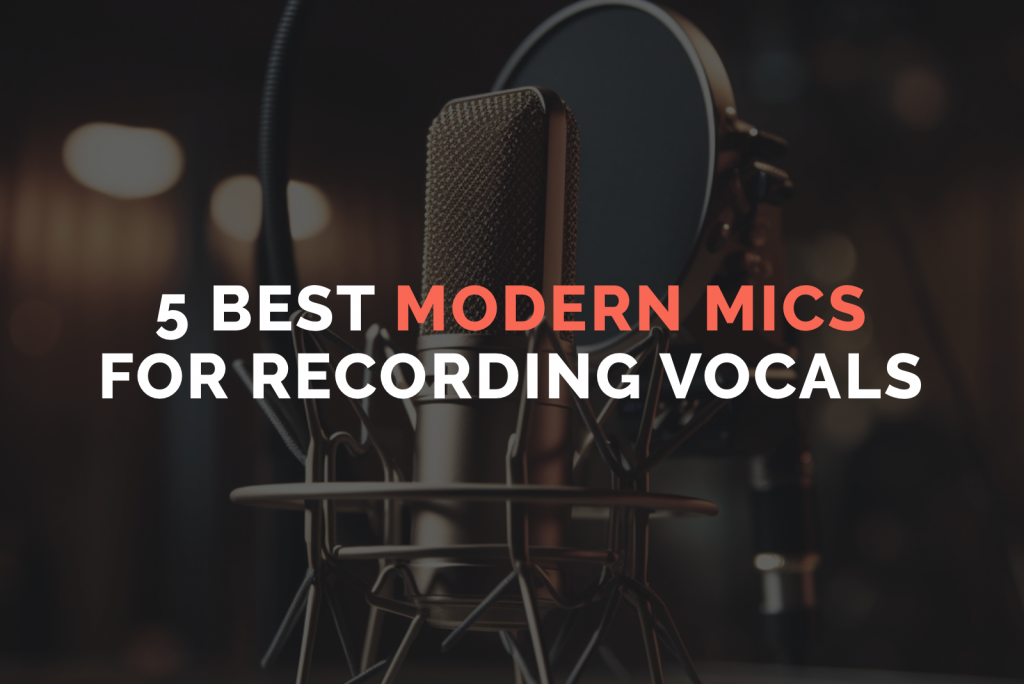5 Best Modern Mics for Recording Vocals
These days, when it comes to vocal mics there are so many affordable options, and it might feel overwhelming knowing which one is right for you.
Although they all function in exactly the same way, sonically they sound very different from one another. Some mics have features such as switchable polar patterns and filters, which you may or may not need.
A good place to start is asking yourself:
What is my budget?
What are you willing to pay? Will this mic be used to make pre-production demos or are you intending to use this for professional recordings?
Does the mic need to be portable?
Will your mic be staying in one place in your home studio? Or do you need to be able to easily carry it to multiple locations?
Do I want a mic for both instruments and vocals?
There are some really great all-around mics that are wonderful for both vocals and instruments, but most vocal microphones are designed to pick up all the nuisances of the human voice. Decide if you want a designated vocal mic or if you’d prefer something more versatile.
Before we dive into some possible options that might work well for you, let’s go over a few of the basics.
Polar Patterns
A microphone’s polar pattern shows you where the mic picks up sound from. Microphones will come with a leaflet that shows you a circular diagram such as the one below:
This is a Cardioid polar pattern. It picks up most of the sound from the front of the microphone and rejects anything at the rear. Cardioid is the standard pattern used for recording vocals.
Most microphones have a fixed polar pattern, but some have a switch that allows you to change between the different patterns. This is great if you want to experiment with different sounds or if you want to be able to use the microphone for multiple applications, such as a room mic for recording drums, or an acoustic guitar mic.
High Pass Filters
Some microphones have the option of a high pass filter. A high pass filter (or low-cut) removes frequencies below a certain point. This is helpful if you want to reduce any unwanted low rumbles in your recordings, such as passing traffic or an air conditioning unit.
USB or XLR?
This really depends on your situation and what you intend to use your microphone for.
USB mics have really come a long way over the years. The main upside is that you can plug them straight into your computer with no need for a separate audio interface. That being said, XLR is the standard connection in both recording and live situations and if you ever plan on using outboard gear (such as compressors or preamps) or upgrading your setup, you can only do this with XLR microphones.
USB mics are great for creating online content or live streaming, or if you don’t want to buy a separate interface. XLR mics are a better choice for professional recording and are much easier to upgrade and use with other equipment.
5 GREAT MICS FOR RECORDING VOCALS
1. RODE NT2a – $399
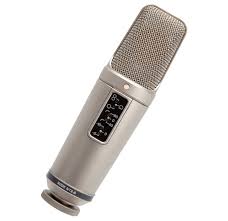
I have owned one of these for the past 10+ years and it’s my go-to mic for a multitude of applications, including vocals and acoustic guitar. It’s reliable and has been built to last.
This particular model has variable polar patters, filters and pads but if this is superfluous to your needs, the NT1 is exactly the same mic but without these options (bringing the price down to $249).
2. Audio-Technica AT2020 – $99
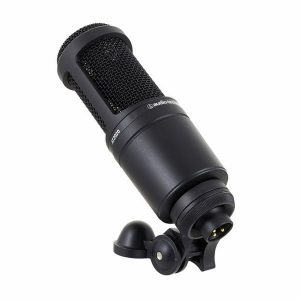
Due to this mic sounding fantastic for not only vocals, but also acoustic guitar and electric guitar amps, it is referred to as the ‘Swiss army pen knife of microphones’. For the price, this really is a wonderful microphone that delivers a great natural tone. There is also a USB version (the AT2020USB-XP $169).
3. Lewitt LCT 240 PRO – $99
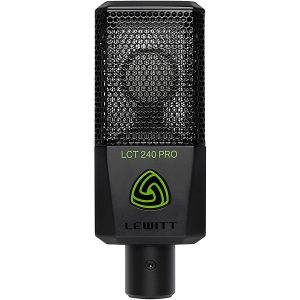
Lewitt have created a ton of wonderful mics for both studio and live applications. The LCT 240 is serious value for money and this mic works well on both vocals and acoustic guitar.
4. AKG C414 – $1,319
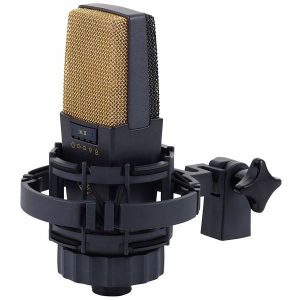
Fun fact: this is my favorite mic in the whole wide world. It’s the most expensive on this list, but it’s an insanely vertsatile mic that you can use on literally anything and it sounds wonderful. If you want to invest in a microphone that will last you a long time (if not forever), you can’t go wrong with a C414.
5. Neumann TLM 102 – $729

Another microphone that is worth the investment is the TLM 102 which excels at vocals. Compared to less expensive mics, the TLM 102 will add clarity and fullness to your voice. For the longest time, most home studio owners couldn’t afford a Neumann, but the TLM 102 has made it possible to own amazingly high-quality vocal mic that will last a lifetime.

